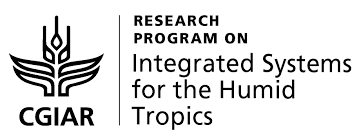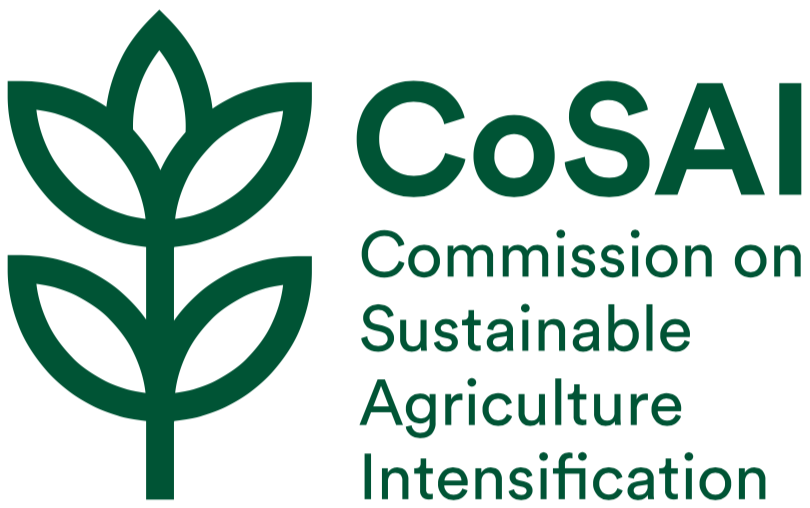Résultats de la recherche
Displaying 1 - 10 of 23 results.
Agricultural Innovation Platform As a Tool for Development Oriented Research: Lessons and Challenges in the Formation and Operationalization
This paper presents the processes, general guidelines lessons and experiences pertaining to “good practices” for organizing and forming Agricultural Innovation Platforms in the Lake Kivu Pilot Learning Site, covering three countries (Uganda, Rwanda and Democratic Republic of Congo) with widely differing social political environments to address agricultural development challenges.
Sujet(s):
renforcement des capacités (RC)facilitationsystèmes d'innovationplates-formes d'innovationConnaissance localeapprentissageapprentissage institutionnelsuivi et évaluation (S&E)processus multipartitesapproches participativesengagement du secteur privérechercherecherche pour le développement (R4D)chaînes de valeurPetits agriculteurs...
Année de publication:
2011Institutional Innovations for Building Impact-Oriented Agricultural Research, Knowledge and Development Institutions
This paper examines how the different institutional innovations arising from various permutations of linkages and interactions of ARD organizations (national, international advanced agricultural research centres and universities) influenced the different outcomes in addressing identified ARD problems.
Sujet(s):
courtagerenforcement des capacités (RC)changement climatiqueéducationvulgarisationfacilitationÉgalité entre les sexessystèmes d'innovationinnovationplates-formes d'innovationTIC (Technologies de l'information et de la communication)apprentissage institutionnelprocessus multipartitesnégociationapproches participativespolitiquesengagement du secteur privéengagement du secteur publicrechercherecherche pour le développement (R4D)chaînes de valeurPetits agriculteurs...
Année de publication:
2011Networks among agricultural stakeholders in the Southwestern Highlands of Uganda
The aim of this study was to explore the interactions that exist among agricultural stakeholders in the southwestern highlands of Uganda as a way of identifying opportunities and gaps for operation of Innovation Platforms (IPs) under the proof of concept of Integrated Agricultural Research for Development (IAR4D) research project.
Sujet(s):
Service de vulgarisationcommunicationvulgarisationsystèmes d'exploitation agricolesécurité alimentaire et nutritionnelleinnovationplates-formes d'innovationapprentissageprocessus multipartitesévaluation des besoinsréseaupolitiquesrechercherecherche pour le développement (R4D)...
Année de publication:
2011Agricultural innovations that increase productivity and generates incomes: lessons on identification and testing processes in Rwandan agricultural innovation platforms
The central question in increasing productivity and generating incomes in African agriculture is how to move from technology generation to innovations that respond to constraints of agricultural production along the value chains. This question was considered in the context of subsistence agriculture, smallholder production systems, inefficient marketing and investments by the private sector, a preponderance of public interventions, and inadequate policies.
Sujet(s):
systèmes d'exploitation agricoleinnovationplates-formes d'innovationprocessus multipartitesapproches participativesrechercherecherche participativerecherche pour le développement (R4D)chaînes de valeur...
Année de publication:
2014Operationalisation of innovation platforms in the Lake Kivu pilot learning site
This chapter is a part of the book Integrated Agricultural Research for Development: from Concept to Practice. It focuses on the development and implementation of action plans for innovation platforms (IPs). The chapter introduces the constitution of committees, IP operationalisation, the case of IP functioning in the Democratic Republic of Congo, and post-formation issues for IPs.
Sujet(s):
innovationplates-formes d'innovationapprentissageprocessus multipartitesrecherche pour le développement (R4D)...
Année de publication:
2013Reorienting funding for research and innovation is an urgent step to transform agri-food systems
Sujet(s):
Année de publication:
2021Mining the gaps: Using machine learning to map 1.2 million agri-food publications from the Global South
The evidence base on agri-food systems is growing exponentially. The CoSAI-commissioned study, Mining the Gaps, applied artificial intelligence to mine more than 1.2 million publications for data, creating a clearer picture of what research has been conducted on small-scale farming and post-production systems from 2000 to the present, and where evidence gaps exist.
Sujet(s):
Année de publication:
2021Better instruments and approaches are needed to transform agri-food systems research and innovation
A range of approaches and financial instruments have been used to stimulate and support innovation in agriculture and resolve interlocking constraints for uptake at scale. These include innovation platforms, results-based payments, value chain approaches, grants and prizes, incubators, participatory work with farmer networks, and many more.
Sujet(s):
Année de publication:
2021Learning from agri-food innovation pathways in Brazil, India and Kenya
Innovation for sustainable agricultural intensification (SAI) is challenging. Changing agricultural systems at scale normally means working with partners at different levels to make changes in policies and social institutions, along with technical practices. This study extracts lessons for practitioners and investors in innovation in SAI, based on concrete examples, to guide future investment.
Sujet(s):
Année de publication:
2022Pages
Sorting block
Filtrer par idiome
Filtrer par sujet(s)
- advisory services (1) Apply advisory services filter advisory services
- brokering (1) Apply brokering filter brokering
- capacity development (CD) (3) Apply capacity development (CD) filter capacity development (CD)
- climate change (2) Apply climate change filter climate change
- communication (1) Apply communication filter communication
- education (1) Apply education filter education
- extension (3) Apply extension filter extension
- facilitation (2) Apply facilitation filter facilitation
- farming systems (2) Apply farming systems filter farming systems
- food and nutrition security (2) Apply food and nutrition security filter food and nutrition security
- gender equality (1) Apply gender equality filter gender equality
- innovation systems (18) Apply innovation systems filter innovation systems
- knowledge and information systems (5) Apply knowledge and information systems filter knowledge and information systems
- learning (8) Apply learning filter learning
- monitoring and evaluation (M&E) (1) Apply monitoring and evaluation (M&E) filter monitoring and evaluation (M&E)
- multi-stakeholder processes (5) Apply multi-stakeholder processes filter multi-stakeholder processes
- needs assessment (1) Apply needs assessment filter needs assessment
- negotiation (1) Apply negotiation filter negotiation
- networks (3) Apply networks filter networks
- participatory approaches (3) Apply participatory approaches filter participatory approaches
- policies (4) Apply policies filter policies
- private sector engagement (2) Apply private sector engagement filter private sector engagement
- public sector engagement (1) Apply public sector engagement filter public sector engagement
- research (11) Apply research filter research
- sustainable agriculture (6) Apply sustainable agriculture filter sustainable agriculture
- value chains (3) Apply value chains filter value chains
Filtrer par auteur(s)
- (-) Remove Commission on Sustainable Agriculture Intensification (CoSAI) filter Commission on Sustainable Agriculture Intensification (CoSAI)Commission on Sustainable Agriculture Intensification (CoSAI)
- Adekunle A. A. (9) Apply Adekunle A. A. filter Adekunle A. A.
- Africa Lead (8) Apply Africa Lead filter Africa Lead
- Agrinatura (31) Apply Agrinatura filter Agrinatura
- Asia-Pacific Association of Agricultural Research Institutions (APAARI) (9) Apply Asia-Pacific Association of Agricultural Research Institutions (APAARI) filter Asia-Pacific Association of Agricultural Research Institutions (APAARI)
- Asia-Pacific Islands Rural Advisory Services Network (APIRAS) (12) Apply Asia-Pacific Islands Rural Advisory Services Network (APIRAS) filter Asia-Pacific Islands Rural Advisory Services Network (APIRAS)
- CDAIS project (87) Apply CDAIS project filter CDAIS project
- Chowdhury A. (9) Apply Chowdhury A. filter Chowdhury A.
- Dhehibi B. (9) Apply Dhehibi B. filter Dhehibi B.
- Dijkman J. (8) Apply Dijkman J. filter Dijkman J.
- Dror I. (24) Apply Dror I. filter Dror I.
- Ekong J. (8) Apply Ekong J. filter Ekong J.
- Fatunbi O. (15) Apply Fatunbi O. filter Fatunbi O.
- Food and Agriculture Organization of the United Nations (FAO) (103) Apply Food and Agriculture Organization of the United Nations (FAO) filter Food and Agriculture Organization of the United Nations (FAO)
- Food and Agriculture Organization of the United Nations ( FAO ) (54) Apply Food and Agriculture Organization of the United Nations ( FAO ) filter Food and Agriculture Organization of the United Nations ( FAO )
- Grovermann C. (8) Apply Grovermann C. filter Grovermann C.
- Hall, A. (24) Apply Hall, A. filter Hall, A.
- Hall A. (10) Apply Hall A. filter Hall A.
- Hoekstra D. (11) Apply Hoekstra D. filter Hoekstra D.
- International Fund for Agricultural Development (15) Apply International Fund for Agricultural Development filter International Fund for Agricultural Development
- International Fund for Agricultural Development (IFAD) (12) Apply International Fund for Agricultural Development (IFAD) filter International Fund for Agricultural Development (IFAD)
- International Livestock Research Institute (10) Apply International Livestock Research Institute filter International Livestock Research Institute
- Klerkx, L. (25) Apply Klerkx, L. filter Klerkx, L.
- Klerkx L. (46) Apply Klerkx L. filter Klerkx L.
- Kumpf, B. (8) Apply Kumpf, B. filter Kumpf, B.
- Lamers D. (8) Apply Lamers D. filter Lamers D.
- Leeuwis, C. (15) Apply Leeuwis, C. filter Leeuwis, C.
- Leeuwis C. (15) Apply Leeuwis C. filter Leeuwis C.
- Lema Z. (7) Apply Lema Z. filter Lema Z.
- Lundy M. (11) Apply Lundy M. filter Lundy M.
- Makate C. (8) Apply Makate C. filter Makate C.
- Mango N. (8) Apply Mango N. filter Mango N.
- Najjar D. (8) Apply Najjar D. filter Najjar D.
- Nichterlein K. (9) Apply Nichterlein K. filter Nichterlein K.
- Ojijo N.K.O. (13) Apply Ojijo N.K.O. filter Ojijo N.K.O.
- Organisation for Economic Co-operation and Development (7) Apply Organisation for Economic Co-operation and Development filter Organisation for Economic Co-operation and Development
- Qaim M. (58) Apply Qaim M. filter Qaim M.
- Sartas M. (16) Apply Sartas M. filter Sartas M.
- Schut M. (44) Apply Schut M. filter Schut M.
- Schut, M. (10) Apply Schut, M. filter Schut, M.
- Sulaiman R. V. (11) Apply Sulaiman R. V. filter Sulaiman R. V.
- Sulaiman, R. V. (18) Apply Sulaiman, R. V. filter Sulaiman, R. V.
- TAP Secretariat (22) Apply TAP Secretariat filter TAP Secretariat
- The World Bank (11) Apply The World Bank filter The World Bank
- Tropical Agriculture Platform (TAP) (33) Apply Tropical Agriculture Platform (TAP) filter Tropical Agriculture Platform (TAP)
- Turner J.A. (8) Apply Turner J.A. filter Turner J.A.
- Wongtschowski, M. (9) Apply Wongtschowski, M. filter Wongtschowski, M.
- World Bank (61) Apply World Bank filter World Bank
- World Bank Group (17) Apply World Bank Group filter World Bank Group
- Zilberman D. (8) Apply Zilberman D. filter Zilberman D.
Filtrer par pays
- Rwanda (4) Apply Rwanda filter Rwanda
- Uganda (4) Apply Uganda filter Uganda
- Congo (2) Apply Congo filter Congo
- India (2) Apply India filter India
- Kenya (2) Apply Kenya filter Kenya
- Brasil (1) Apply Brasil filter Brasil
- Brazil (1) Apply Brazil filter Brazil
- Colombia (1) Apply Colombia filter Colombia
- Democratic Republic of the Congo (1) Apply Democratic Republic of the Congo filter Democratic Republic of the Congo
- Nigeria (1) Apply Nigeria filter Nigeria
- Sri Lanka (1) Apply Sri Lanka filter Sri Lanka
Filtrer par éditeur(s)
- Commission on Sustainable Agriculture Intensification (17) Apply Commission on Sustainable Agriculture Intensification filter Commission on Sustainable Agriculture Intensification
- Forum for Agricultural Research in Africa (2) Apply Forum for Agricultural Research in Africa filter Forum for Agricultural Research in Africa
- Learning Publics Istitute (2) Apply Learning Publics Istitute filter Learning Publics Istitute
- Academic Journals (1) Apply Academic Journals filter Academic Journals
- Foreign, Commonwealth & Development Office (1) Apply Foreign, Commonwealth & Development Office filter Foreign, Commonwealth & Development Office
- International Food Policy Research Institute (1) Apply International Food Policy Research Institute filter International Food Policy Research Institute
- Springer (1) Apply Springer filter Springer




